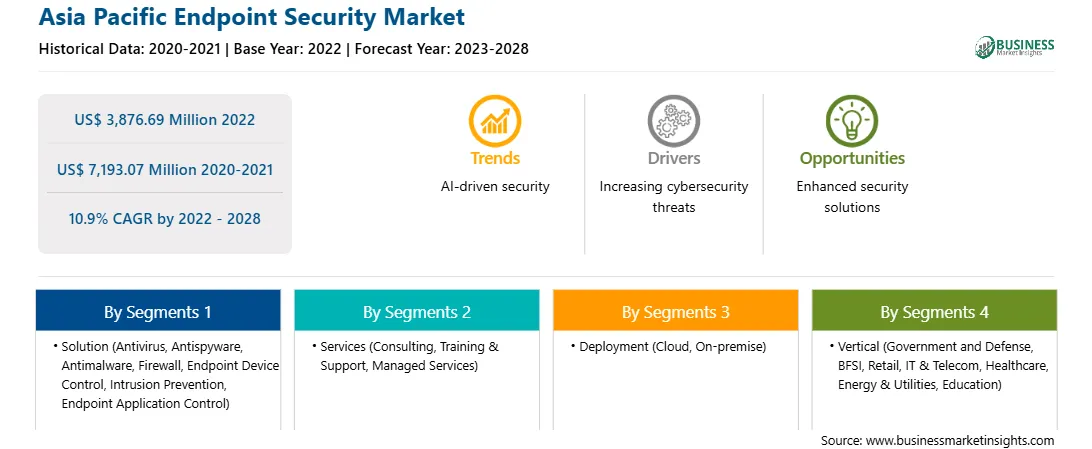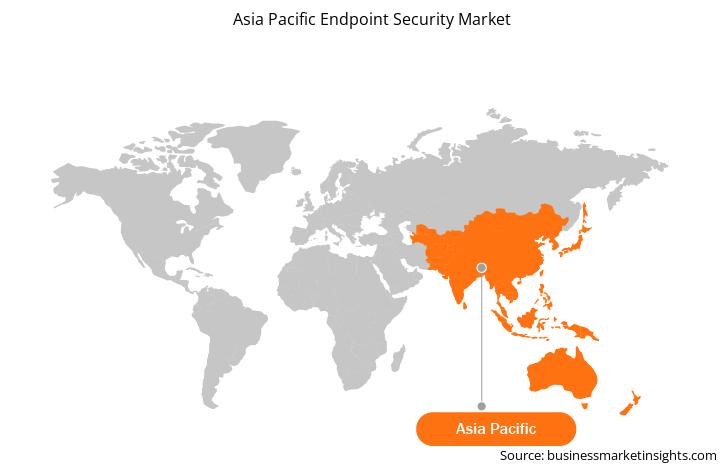Cloud computing is transforming modern workplaces in diverse industry verticals by enhancing security, IT, and DevOps, which is accelerating the development of innovative solutions and services for enhanced user experience. Owing to the potential benefits of cloud computing, the adoption of cloud-based solutions among enterprises has been growing rapidly in the past few years. The continuously evolving cloud architectures, algorithms, and integration of advanced features in cloud solutions fuel the adoption of these solutions in BFSI, IT & telecom, retail, manufacturing, automotive, and other diverse industry verticals. Cloud deployment through cloud-based security endpoint solutions is an attractive and easy option for companies as it provides them easy scalability and operational flexibility and offers several benefits such as need-basis payment, regular data backup, high security, comparatively low capital & operations costs, reduced operational risks, and instant provisioning features. Further, the complex functions and high maintenance costs of on-premise solutions are also contributing to the adoption of cloud-based solutions. With many companies offering cloud-based unified endpoint management (UEM) solutions, such as MobileIron; Citrix Systems, Inc.; IBM Corporation; Microsoft Corporation; and VMware, Inc., the demand for cloud-based solutions over on-premise solutions is projected to grow significantly, especially among SMEs over the forecast period. For instance, in August 2022, Microsoft Corporation developed two new Windows 11 previews to the Windows Insider Beta Channel with improvements to Defender for Endpoint's ransomware protection and other fixes. Such developments in cloud-based security endpoint solutions are expected to fuel the endpoint security market growth.
China, India, South Korea, Japan, and Australia are among the key economies in Asia Pacific. India ranks third in terms of Domain Name System (DNS) hijacking incidences, indicating a significant increase in cybercrime. According to the IBM X-Force Threat Intelligence Index 2022, Asia experienced 26% of all globally reported attacks in 2021; India ranks first among the most often targeted countries in Asia. According to a recent study by the Australian Cyber Security Growth Network, the cybersecurity security industry in the country is likely to triple in size in the next 10 years. The growing number of connected devices and adoption of IoT technologies across various industries are expected to boost the expansion of endpoint security solutions in the coming years.

Strategic insights for the Asia Pacific Endpoint Security provides data-driven analysis of the industry landscape, including current trends, key players, and regional nuances. These insights offer actionable recommendations, enabling readers to differentiate themselves from competitors by identifying untapped segments or developing unique value propositions. Leveraging data analytics, these insights help industry players anticipate the market shifts, whether investors, manufacturers, or other stakeholders. A future-oriented perspective is essential, helping stakeholders anticipate market shifts and position themselves for long-term success in this dynamic region. Ultimately, effective strategic insights empower readers to make informed decisions that drive profitability and achieve their business objectives within the market.

| Report Attribute | Details |
|---|---|
| Market size in 2022 | US$ 3,876.69 Million |
| Market Size by 2028 | US$ 7,193.07 Million |
| Global CAGR (2022 - 2028) | 10.9% |
| Historical Data | 2020-2021 |
| Forecast period | 2023-2028 |
| Segments Covered |
By Solution
|
| Regions and Countries Covered | Asia-Pacific
|
| Market leaders and key company profiles |
The geographic scope of the Asia Pacific Endpoint Security refers to the specific areas in which a business operates and competes. Understanding local distinctions, such as diverse consumer preferences (e.g., demand for specific plug types or battery backup durations), varying economic conditions, and regulatory environments, is crucial for tailoring strategies to specific markets. Businesses can expand their reach by identifying underserved areas or adapting their offerings to meet local demands. A clear market focus allows for more effective resource allocation, targeted marketing campaigns, and better positioning against local competitors, ultimately driving growth in those targeted areas.

The Asia Pacific endpoint security market is segmented into solution, services, deployment, and vertical.
AO Kaspersky Lab; Avast Software s.r.o.; Cisco Systems, Inc.; ESET, spol. s r.o.; Fortinet, Inc.; McAfee, LLC; Microsoft Corporation; Palo Alto Networks, Inc.; and F-Secure are the leading companies operating in the endpoint security market in the region.
The Asia Pacific Endpoint Security Market is valued at US$ 3,876.69 Million in 2022, it is projected to reach US$ 7,193.07 Million by 2028.
As per our report Asia Pacific Endpoint Security Market, the market size is valued at US$ 3,876.69 Million in 2022, projecting it to reach US$ 7,193.07 Million by 2028. This translates to a CAGR of approximately 10.9% during the forecast period.
The Asia Pacific Endpoint Security Market report typically cover these key segments-
The historic period, base year, and forecast period can vary slightly depending on the specific market research report. However, for the Asia Pacific Endpoint Security Market report:
The Asia Pacific Endpoint Security Market is populated by several key players, each contributing to its growth and innovation. Some of the major players include:
The Asia Pacific Endpoint Security Market report is valuable for diverse stakeholders, including:
Essentially, anyone involved in or considering involvement in the Asia Pacific Endpoint Security Market value chain can benefit from the information contained in a comprehensive market report.